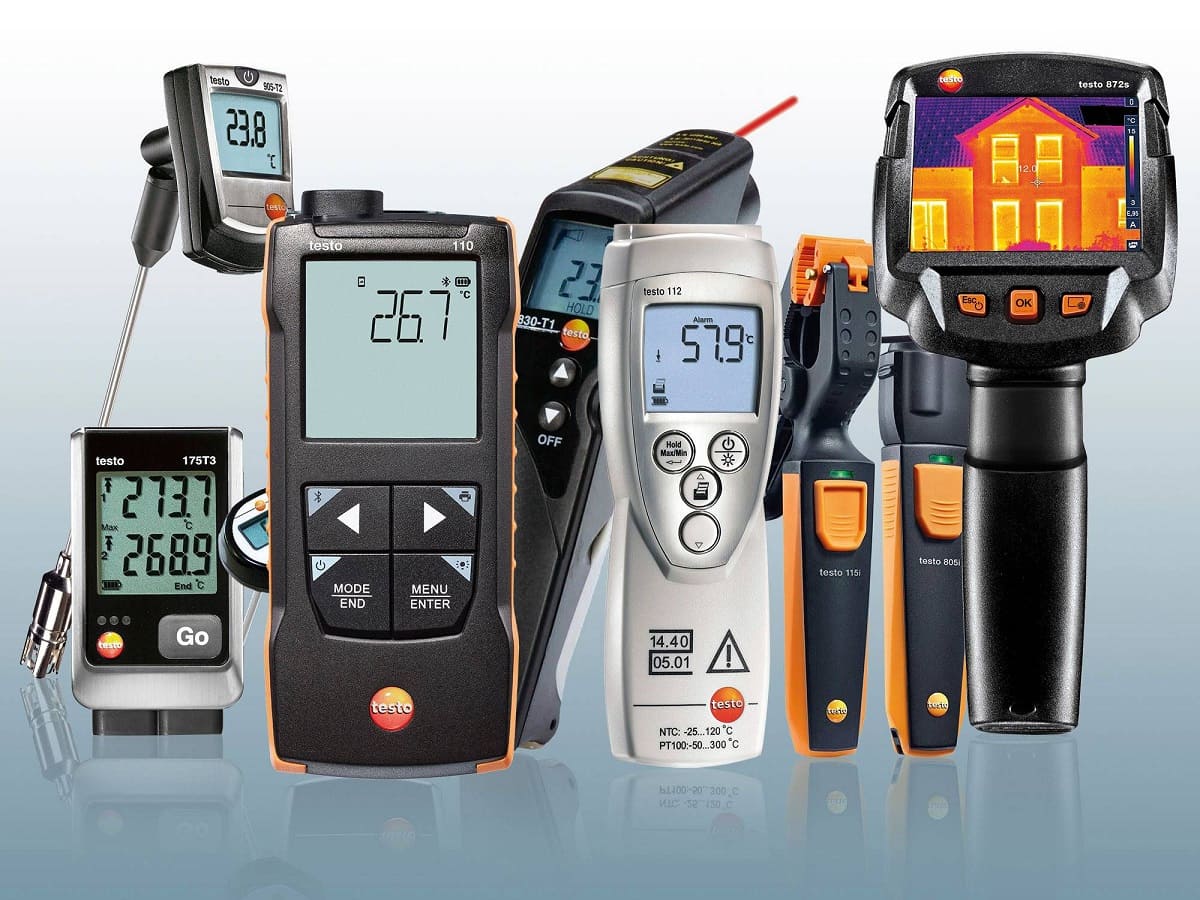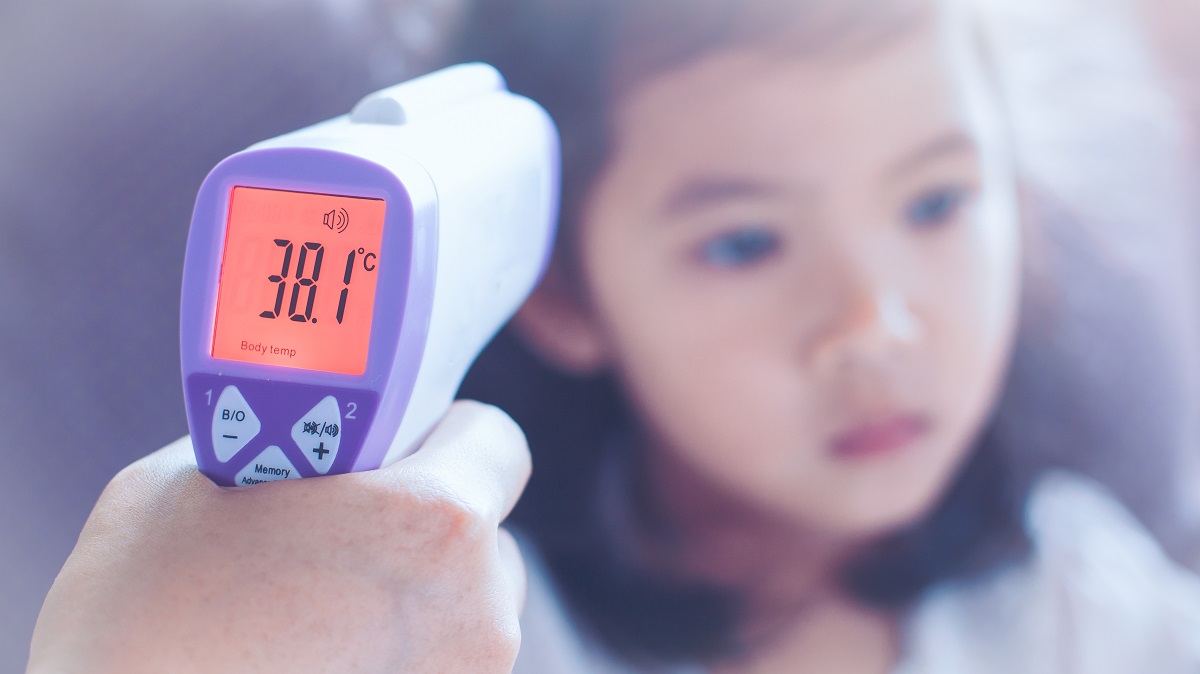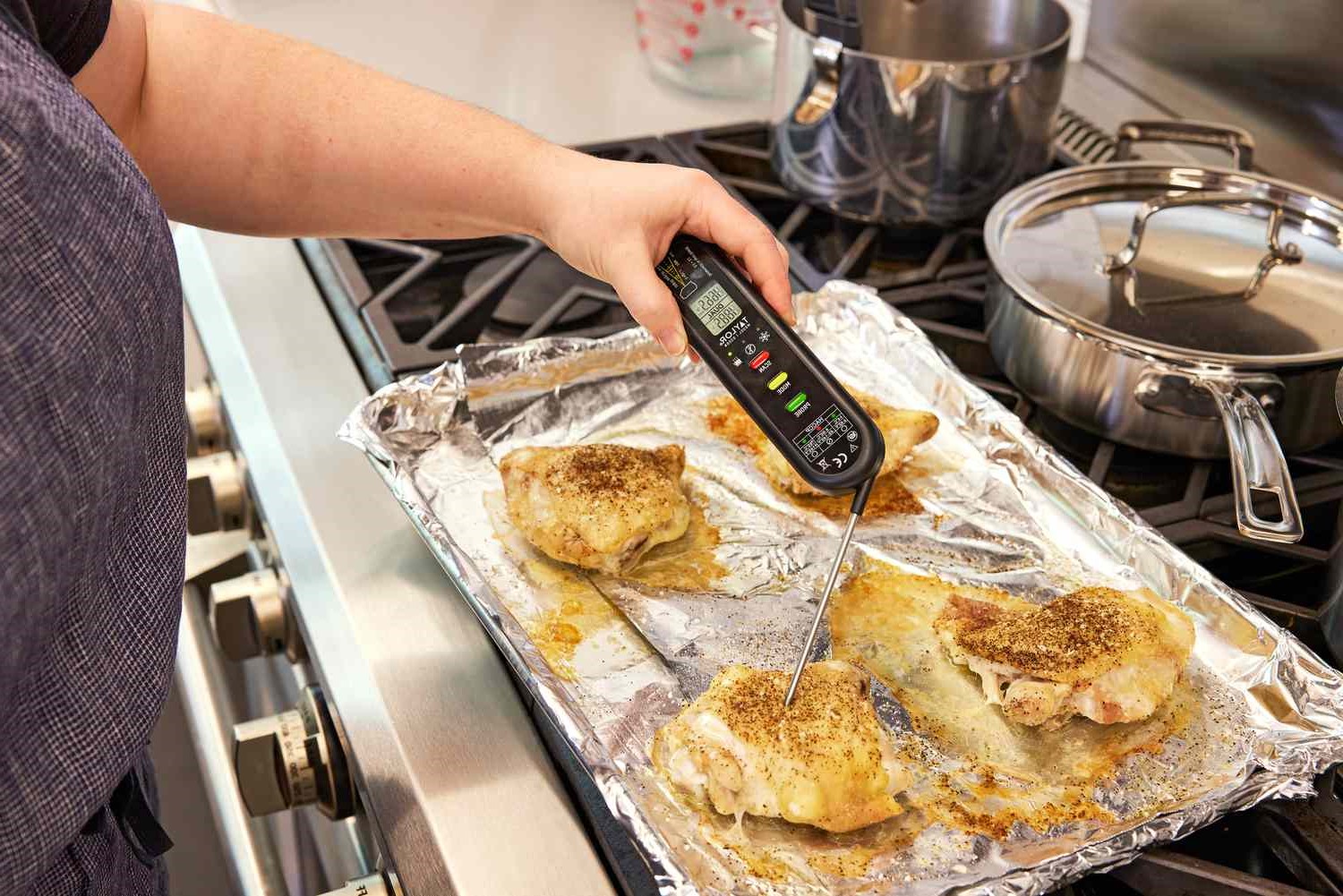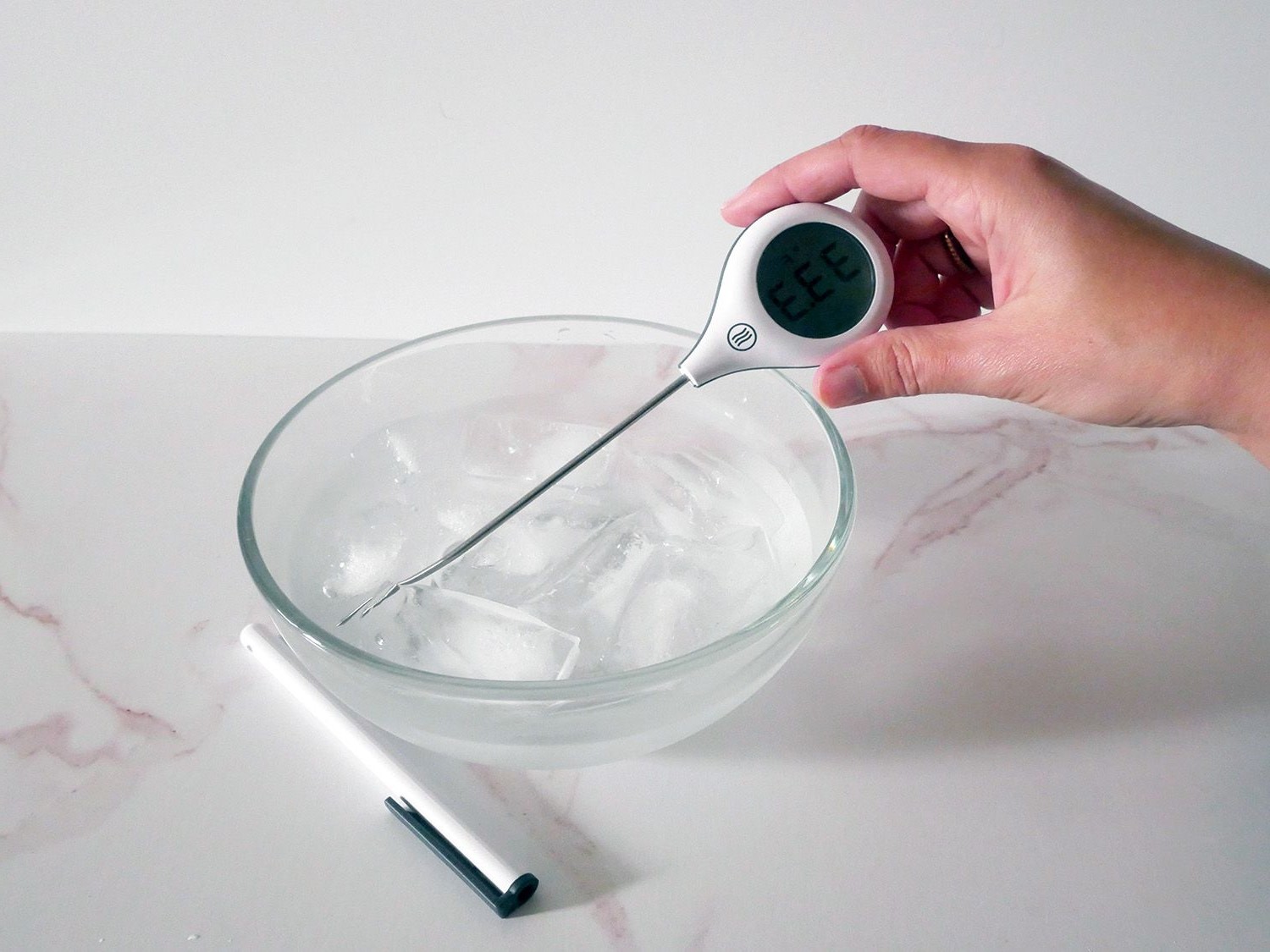Home>Health & Nutrition>Accuracy Of Forehead Thermometers: Understanding Their Reliability
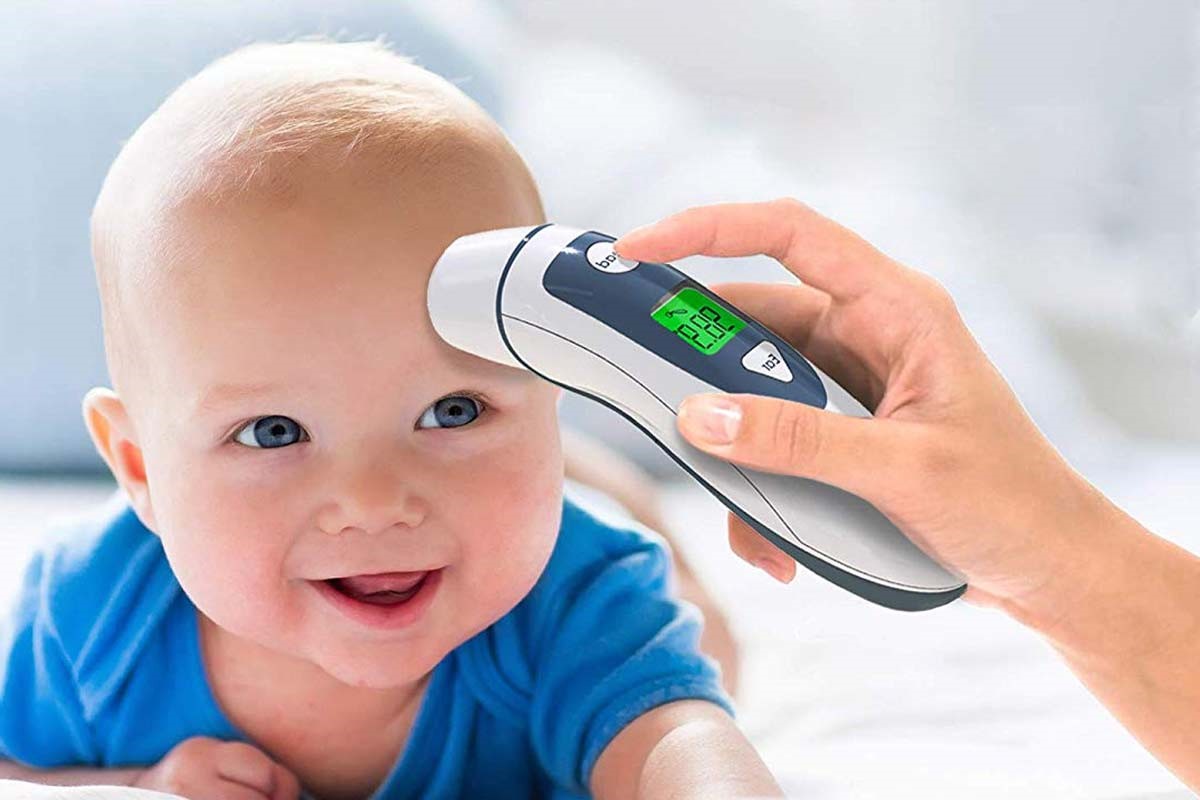

Health & Nutrition
Accuracy Of Forehead Thermometers: Understanding Their Reliability
Published: March 4, 2024
Learn about the reliability of forehead thermometers and their impact on health and nutrition. Understand the accuracy and benefits for better well-being.
(Many of the links in this article redirect to a specific reviewed product. Your purchase of these products through affiliate links helps to generate commission for Temperatures.com, at no extra cost. Learn more)
Table of Contents
Introduction
Forehead thermometers have become increasingly popular for their convenience and ease of use in measuring body temperature. In recent times, their usage has surged due to the global health crisis, leading to a growing interest in understanding their accuracy and reliability.
As individuals and healthcare professionals seek efficient and non-invasive methods for temperature monitoring, forehead thermometers have emerged as a go-to option. Their appeal lies in the simplicity of operation, as they require only a gentle swipe across the forehead to provide a temperature reading. This user-friendly approach has made them particularly valuable for parents monitoring the health of young children, as well as for use in public spaces and healthcare settings.
However, amidst the widespread adoption of forehead thermometers, questions have arisen regarding their accuracy and reliability. It is essential to delve into the intricacies of how these thermometers function, the factors that can influence their accuracy, and how they compare to other types of thermometers. By gaining a comprehensive understanding of these aspects, individuals can make informed decisions about the use of forehead thermometers for temperature monitoring.
In this article, we will explore the working principles of forehead thermometers, the factors that can impact their accuracy, and how they stack up against traditional thermometers. Additionally, we will delve into the concept of reliability and provide practical tips for ensuring the accuracy of forehead thermometer readings. By shedding light on these critical aspects, readers will gain valuable insights into the accuracy and reliability of forehead thermometers, empowering them to make well-informed choices when it comes to monitoring body temperature.
How Forehead Thermometers Work
Forehead thermometers, also known as temporal artery thermometers, operate based on advanced infrared technology. They are designed to measure the infrared heat radiating from the skin's surface, particularly the temporal artery located on the forehead. This non-invasive approach makes them a preferred choice for temperature monitoring, especially in situations where traditional methods may be impractical or uncomfortable.
The functioning of forehead thermometers revolves around the principle of infrared energy detection. When the thermometer is placed in contact with the forehead or held in close proximity, it detects the infrared heat emitted by the skin. The temporal artery, situated just below the skin's surface, serves as an ideal location for temperature measurement due to its proximity to the carotid artery, which carries blood from the heart to the brain. As a result, the temperature readings obtained from the temporal artery are considered to be closely correlated with core body temperature.
Upon detecting the infrared energy, the forehead thermometer converts this data into a temperature reading, which is then displayed on the device's screen. The entire process is swift and typically takes only a few seconds to provide an accurate temperature measurement. This rapid response time is particularly advantageous when dealing with restless or uncooperative individuals, such as young children or individuals with limited mobility.
The user-friendly nature of forehead thermometers, coupled with their ability to deliver quick and reliable temperature readings, has contributed to their widespread adoption in various settings. From homes and schools to healthcare facilities and public spaces, these thermometers have proven to be valuable tools for monitoring body temperature with minimal disruption.
In essence, forehead thermometers function by harnessing the power of infrared technology to detect and translate the body's natural heat emissions into precise temperature readings. This innovative approach has revolutionized temperature monitoring, offering a convenient and non-invasive alternative to traditional thermometers.
By understanding the underlying principles of how forehead thermometers work, individuals can appreciate the technology behind these devices and make informed decisions regarding their usage for accurate temperature assessment.
Factors Affecting Accuracy
Several factors can influence the accuracy of forehead thermometers, impacting the reliability of temperature readings. Understanding these variables is crucial for obtaining precise measurements and maximizing the effectiveness of these devices.
-
User Technique: The manner in which the thermometer is used can significantly impact its accuracy. Proper positioning and contact with the forehead are essential for reliable readings. Users should ensure that the thermometer is placed in the correct location and held steady during the measurement process. Failure to maintain consistent contact or positioning may lead to inaccurate results.
-
Environmental Conditions: External factors such as ambient temperature and humidity can affect the performance of forehead thermometers. Extreme environmental conditions, such as exposure to direct sunlight or drafts, can alter the accuracy of temperature readings. It is important to use the thermometer in a stable indoor environment to minimize the influence of external elements.
-
Skin Surface Factors: The condition of the skin's surface can also impact the accuracy of forehead thermometer readings. Sweat, dirt, or makeup on the forehead may interfere with the infrared heat detection, leading to erroneous temperature measurements. Prior to using the thermometer, it is advisable to ensure that the forehead is clean and free from any substances that could impede accurate readings.
-
User Health and Activity Level: The health and activity level of the individual being measured can affect the accuracy of forehead thermometers. Factors such as perspiration, recent physical activity, or the presence of head coverings can influence the skin's temperature and, consequently, the readings obtained. It is important to consider these variables and, when possible, allow the individual to acclimate to the testing environment before taking a measurement.
-
Device Calibration and Maintenance: The proper calibration and maintenance of the forehead thermometer are critical for ensuring accuracy. Regular calibration checks and adherence to the manufacturer's maintenance guidelines are essential to uphold the device's precision. Any deviations from the recommended calibration procedures or neglect of maintenance can compromise the accuracy of temperature readings.
By being mindful of these factors and taking proactive measures to address them, users can enhance the accuracy of forehead thermometers and obtain reliable temperature measurements. Additionally, awareness of these variables empowers individuals to make informed decisions regarding the optimal usage of these devices in various settings, ultimately contributing to effective temperature monitoring and healthcare management.
Comparison with Other Types of Thermometers
When evaluating the accuracy and reliability of forehead thermometers, it is essential to compare them with traditional types of thermometers to gain a comprehensive understanding of their performance in temperature measurement.
Oral and Rectal Thermometers
Oral and rectal thermometers have long been utilized for temperature monitoring, particularly in healthcare settings. While these thermometers are capable of providing accurate readings, they often require prolonged contact with the individual, which can be challenging, especially when dealing with young children or individuals with limited cooperation. Additionally, the invasive nature of rectal thermometers may lead to discomfort and resistance, making temperature measurement a cumbersome process. In contrast, forehead thermometers offer a non-invasive and swift alternative, allowing for convenient temperature assessment without causing discomfort or distress.
Ear Thermometers
Ear thermometers, also known as tympanic thermometers, operate by measuring the infrared heat emitted from the eardrum. While they offer relatively quick temperature readings, their accuracy can be influenced by factors such as earwax buildup or improper positioning within the ear canal. Moreover, the use of ear thermometers may not be suitable for individuals with ear infections or those who have undergone ear surgery. Forehead thermometers, with their non-invasive approach and minimal contact requirement, present a favorable alternative, particularly in scenarios where ear thermometers may pose limitations.
Digital Stick Thermometers
Digital stick thermometers, commonly used for oral and axillary temperature measurements, are known for their simplicity and affordability. However, the accuracy of oral measurements can be affected by factors such as drinking hot or cold liquids prior to the reading, while axillary measurements may be influenced by inadequate contact with the skin. Forehead thermometers, with their ability to swiftly capture temperature readings without the need for oral contact or precise positioning, offer a practical solution for reliable temperature assessment in diverse situations.
Infrared Forehead Thermometers
Infrared forehead thermometers, often referred to as temporal artery thermometers, have gained prominence for their ease of use and non-invasive nature. Their ability to swiftly capture temperature readings from the temporal artery makes them well-suited for use in various settings, including homes, schools, and healthcare facilities. Unlike traditional thermometers, infrared forehead thermometers do not require direct contact with mucous membranes or sensitive areas, reducing the risk of cross-contamination and enhancing user comfort.
By comparing forehead thermometers with traditional types of thermometers, it becomes evident that they offer distinct advantages in terms of convenience, non-invasiveness, and rapid temperature assessment. The unique attributes of forehead thermometers position them as valuable tools for accurate and reliable temperature monitoring, catering to the diverse needs of individuals and healthcare professionals.
Understanding Reliability
Reliability is a critical aspect when assessing the performance of forehead thermometers in temperature measurement. The reliability of a thermometer refers to its ability to consistently deliver accurate and precise temperature readings, thereby instilling confidence in the obtained measurements. For forehead thermometers, reliability encompasses not only the accuracy of individual readings but also the consistency of results over time and across multiple users.
The reliability of forehead thermometers is underscored by their consistent performance in capturing temperature readings from the temporal artery with minimal variability. This reliability is particularly valuable in situations where swift and dependable temperature assessment is essential, such as in healthcare settings, schools, and public spaces. By consistently producing accurate readings, forehead thermometers enable timely identification of fever or elevated body temperature, facilitating prompt intervention and appropriate healthcare management.
Furthermore, the non-invasive nature of forehead thermometers contributes to their reliability by minimizing discomfort and resistance during temperature measurement. This is especially beneficial when monitoring the temperature of young children, individuals with sensory sensitivities, or those requiring frequent temperature checks. The user-friendly design of forehead thermometers enhances their reliability by promoting ease of use and reducing the likelihood of measurement errors stemming from user discomfort or agitation.
In addition to their consistent performance and user-friendly attributes, the reliability of forehead thermometers is evident in their versatility across diverse age groups and population segments. These thermometers have demonstrated reliability in capturing accurate temperature readings from infants to the elderly, accommodating the varying anatomical and physiological characteristics of different individuals. This adaptability underscores the reliability of forehead thermometers in catering to the temperature monitoring needs of a broad demographic.
Moreover, the reliability of forehead thermometers is reinforced by their rapid response time, allowing for quick temperature assessment without prolonged waiting periods. This swift turnaround time is instrumental in scenarios where immediate temperature readings are crucial, such as in emergency medical situations or when monitoring individuals with fluctuating health conditions.
By understanding the reliability of forehead thermometers in delivering consistent and accurate temperature measurements, individuals and healthcare professionals can confidently rely on these devices for effective temperature monitoring. The reliability of forehead thermometers, characterized by their consistent performance, user-friendly design, versatility, and rapid response time, positions them as dependable tools for accurate temperature assessment in various settings.
Tips for Ensuring Accuracy
Ensuring the accuracy of forehead thermometers is paramount for obtaining reliable temperature readings and making informed healthcare decisions. By implementing the following tips, individuals can optimize the performance of these devices and enhance the precision of temperature measurements.
-
Proper Positioning: When using a forehead thermometer, ensure that it is positioned correctly on the forehead, covering the temporal artery area. Maintaining consistent contact with the skin is crucial for accurate readings.
-
Stable Testing Environment: Conduct temperature measurements in a stable indoor environment to minimize the influence of external factors such as direct sunlight, drafts, or extreme temperatures. This helps maintain the accuracy of the thermometer's readings.
-
Skin Preparation: Prior to using the forehead thermometer, ensure that the forehead is clean and free from any substances that could interfere with the infrared heat detection. Wiping the forehead gently with a dry cloth can help remove sweat, dirt, or makeup, promoting accurate temperature assessment.
-
User Cooperation: Encourage the individual undergoing temperature measurement to remain still and calm, as excessive movement or agitation can impact the accuracy of the readings. For young children, engaging in a calming activity or distraction can help promote cooperation during the measurement process.
-
Consistent Technique: Adhere to a consistent technique when using the forehead thermometer to minimize variability in measurements. Whether swiping the thermometer across the forehead or holding it in place, maintaining a standardized approach can contribute to reliable temperature readings.
-
Device Maintenance: Regularly inspect the forehead thermometer for any signs of damage or irregularities. Adhere to the manufacturer's guidelines for cleaning and maintenance to ensure the device remains in optimal working condition, thereby preserving its accuracy.
-
Calibration Checks: Periodically calibrate the forehead thermometer as per the manufacturer's recommendations to uphold its accuracy. Calibration ensures that the device continues to deliver precise temperature readings, contributing to reliable performance over time.
-
User Education: Educate individuals, caregivers, and healthcare professionals on the proper usage of forehead thermometers. Providing clear instructions and guidance on optimal measurement techniques can enhance the accuracy of temperature assessments.
By incorporating these tips into the usage of forehead thermometers, individuals can bolster the accuracy of temperature readings, fostering confidence in the obtained measurements. These proactive measures contribute to the effective utilization of forehead thermometers for reliable temperature monitoring in diverse settings, ultimately supporting informed healthcare management and decision-making.
Conclusion
In conclusion, the widespread adoption of forehead thermometers has reshaped temperature monitoring, offering a convenient and non-invasive approach to obtaining accurate readings. The advanced infrared technology utilized by these thermometers enables swift and reliable temperature assessment, catering to the diverse needs of individuals, healthcare professionals, and public health initiatives. By understanding the intricacies of how forehead thermometers function, the factors influencing their accuracy, and their comparison with traditional thermometers, individuals can make well-informed decisions regarding their usage for temperature monitoring.
The reliability of forehead thermometers, characterized by their consistent performance, user-friendly design, versatility, and rapid response time, positions them as dependable tools for accurate temperature assessment in various settings. Their non-invasive nature and ability to swiftly capture temperature readings from the temporal artery make them particularly valuable for monitoring the health of young children, individuals with sensory sensitivities, and those requiring frequent temperature checks.
To ensure the accuracy of forehead thermometer readings, it is essential to adhere to proper positioning techniques, conduct measurements in stable environments, prepare the skin adequately, and educate users on optimal measurement techniques. Additionally, regular device maintenance, calibration checks, and user cooperation play pivotal roles in enhancing the precision of temperature assessments, ultimately contributing to reliable healthcare management and decision-making.
As the demand for efficient and reliable temperature monitoring continues to grow, forehead thermometers stand as a testament to innovation in healthcare technology. Their ability to deliver accurate and consistent temperature readings, coupled with their user-friendly attributes, positions them as indispensable tools for individuals, caregivers, and healthcare professionals alike. By embracing the advancements in temperature monitoring offered by forehead thermometers, individuals can navigate healthcare challenges with confidence, knowing that they have access to a reliable and effective means of assessing body temperature.
In essence, the accuracy and reliability of forehead thermometers underscore their significance in promoting proactive healthcare management, facilitating early detection of fever or elevated body temperature, and contributing to the well-being of individuals across diverse age groups and healthcare settings. As these thermometers continue to play a pivotal role in temperature monitoring, their impact on healthcare practices and public health initiatives is poised to remain profound, offering a blend of precision, convenience, and user-centric design in the realm of temperature assessment.
